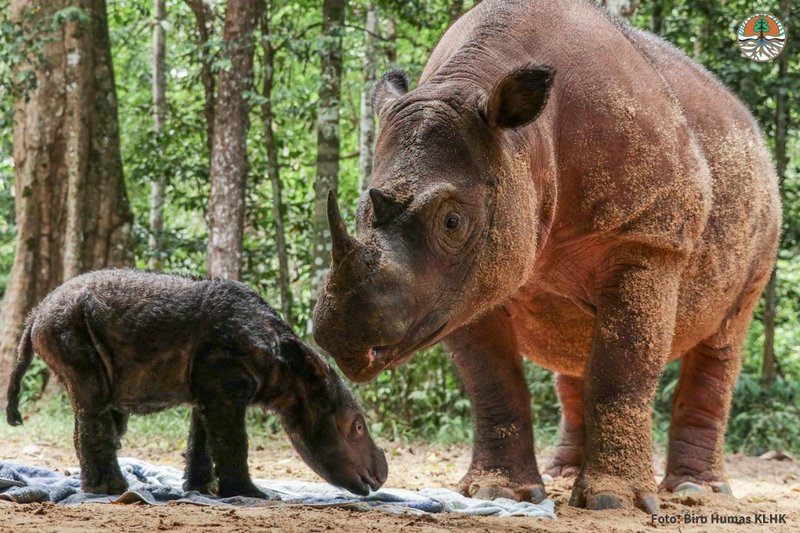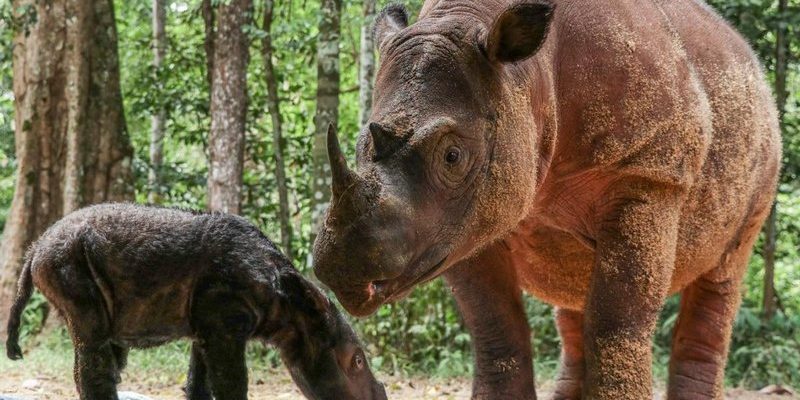
Sumatran rhinos, the smallest of the living rhinoceroses, are known for their thick skin and hairy bodies. They live primarily in dense forests across Indonesia and Malaysia. Not only do their physical traits captivate us, but their behaviors and cognitive skills offer a fascinating glimpse into how they interact with the world around them. Let’s dive into what makes these creatures tick, exploring their intelligence, social behaviors, and how they adapt to their environment.
Cognitive Abilities of Sumatran Rhinos
When we talk about animal intelligence, what do we really mean? For Sumatran rhinos, cognitive abilities encompass a range of factors, including problem-solving skills, memory, and social interactions. Interestingly, these rhinos can be quite clever, navigating their thick forest habitats and finding food in ways that showcase their intelligence.
Research indicates that Sumatran rhinos have excellent spatial awareness. They can remember the locations of food and water sources over time, which is essential in their dense, often confusing habitats. Picture a Sumatran rhino as a savvy traveler, mapping out its journey in its head, so it knows where to go when it’s time to eat or drink. This skill is vital for their survival, especially in areas where resources can be scarce.
Another fascinating aspect of their cognitive abilities is their communication. Sumatran rhinos are known to make a range of sounds, from snorts to grunts. These vocalizations help them communicate with each other over long distances. Much like a game of telephone, these sounds can carry through the thick foliage, allowing individuals to stay connected even when they’re not in sight. You might wonder how they can interpret these sounds. It’s all about context and experience, which come into play when they interact with each other.
Social Behavior and Interactions
You might not think of rhinos as social animals, but Sumatran rhinos can exhibit some unique social behaviors. While they are generally solitary creatures, they do form loose social bonds, especially between mothers and their calves. The relationship between a mother and her young is crucial for survival, as the mother teaches her calf essential skills such as foraging and navigating their habitat.
Mothers are highly protective of their young, often staying close by while they learn and grow. They communicate with soft sounds, fostering a nurturing environment. This kind of maternal behavior isn’t just instinctual; it shows a level of emotional intelligence as the mother responds to her calf’s needs. Think about how human parents guide their children through life. In a way, Sumatran rhinos do something similar in the wild.
As they mature, young rhinos start to explore their environment more independently. They may encounter other rhinos, leading to some interesting social interactions. While they prefer solitude, they don’t shy away from the occasional interaction with peers. This can include vocal exchanges, scent-marking territories, or simply passing each other in the forest. These subtle interactions help establish a social structure, even in a world where competition for resources is fierce.
Learning and Memory
Learning isn’t just for humans; Sumatran rhinos have shown impressive learning abilities too. They can adapt their behavior based on their experiences. For instance, if a rhino encounters an obstacle—like a fallen tree while foraging—it can learn to navigate around it next time. This kind of trial-and-error learning is a hallmark of intelligence, showing that they can think and adapt to their environment.
Memory plays a significant role in their survival. Sumatran rhinos can remember specific locations and experiences for years. Imagine trying to find your way home after being away for a long time. Sumatran rhinos do something similar in their habitats. They remember the locations of water holes or the best spots to find certain types of plants. This kind of memory is essential, especially in the wild, where conditions can change rapidly.
Interestingly, researchers believe their memory is influenced by their need to find food and avoid dangers. If a rhino remembers a spot where they found a delicious fruit last season, they’ll likely seek it out again, relying on their memory to guide them. It’s like having a favorite restaurant you can’t wait to revisit—only for these rhinos, it’s all about survival.
Problem-Solving Skills
Let’s talk about problem-solving. Sumatran rhinos often face challenges in their environments, from finding food to navigating complex terrain. Their ability to solve problems effectively showcases their intelligence. For example, when encountering a steep slope or a muddy area, they’ll assess their surroundings and choose the best path forward.
An intriguing observation is how Sumatran rhinos will use their tools—like branches or stones—to help them reach food. This behavior indicates a level of planning and foresight. Picture a child using a stick to poke at something out of reach. Sumatran rhinos do something similar, demonstrating that they can think ahead about how to get what they want.
Researchers also study how these rhinos react to changes in their environment. When they encounter something new—like a strange sound or an unfamiliar object—they often take their time investigating it. This curiosity is another sign of their intelligence. Instead of running away, they approach new challenges with caution and curiosity, figuring out if it’s a threat or something worth exploring.
Impact of Human Activity on Their Intelligence
Unfortunately, Sumatran rhinos face numerous threats from human activities, including habitat destruction and poaching. These factors not only impact their numbers but also influence their cognitive development. When their natural habitats are disrupted, these rhinos may struggle to learn essential survival skills.
Imagine if a child was suddenly moved to a new school halfway through the year. They’d have to relearn how to navigate a new environment, make friends, and adjust to different routines. Sumatran rhinos face similar challenges when their habitats are fragmented. They may miss out on critical learning experiences, impacting their ability to thrive in the wild.
Additionally, captivity presents a different set of challenges. Sumatran rhinos in zoos or conservation facilities often cannot engage in natural behaviors that promote their cognitive development. Enrichment activities, like puzzle feeders, can help stimulate their minds, but it doesn’t replace the complex interactions and experiences they would have in the wild. Protecting their natural habitats is crucial for their ability to learn and adapt effectively.
Conservation Efforts and Their Importance
Conservation efforts for Sumatran rhinos are vital not just for their survival, but also for maintaining their cognitive abilities. Organizations worldwide are working hard to protect their habitats and educate the public about these amazing creatures. Awareness and education can help promote behaviors that reduce human impact on their environment.
Conservationists aim to create safe environments where Sumatran rhinos can thrive. This includes protecting their habitats from logging, agriculture, and human encroachment. By ensuring they have space to roam, find food, and interact with each other, we also support their cognitive development.
Community involvement is also a crucial part of conservation efforts. Local people can play a significant role in protecting these animals by promoting sustainable practices and supporting wildlife protection laws. It’s like a community rallying together to protect a local treasure—everyone benefits when we all pitch in to safeguard the future of the Sumatran rhinoceros.
The Future of Sumatran Rhinos
So, how smart is a Sumatran rhinoceros? It’s clear they possess impressive cognitive abilities that help them navigate their complex environments. Their memory, problem-solving skills, and social interactions reveal a level of intelligence that shouldn’t be overlooked. However, their future hangs in the balance, shaped by human actions that can either help or hinder their survival.
As we learn more about these incredible creatures and their behaviors, it’s essential to support conservation efforts. Every little bit helps—from promoting awareness to supporting organizations dedicated to their preservation. Protecting the Sumatran rhinoceros means not only saving a species but also safeguarding the amazing cognitive abilities that make them unique.
In conclusion, Sumatran rhinoceroses are more than just their size and appearance. They are intelligent beings that deserve our attention and respect. With understanding and action, we can ensure these remarkable animals have a future in our world.

